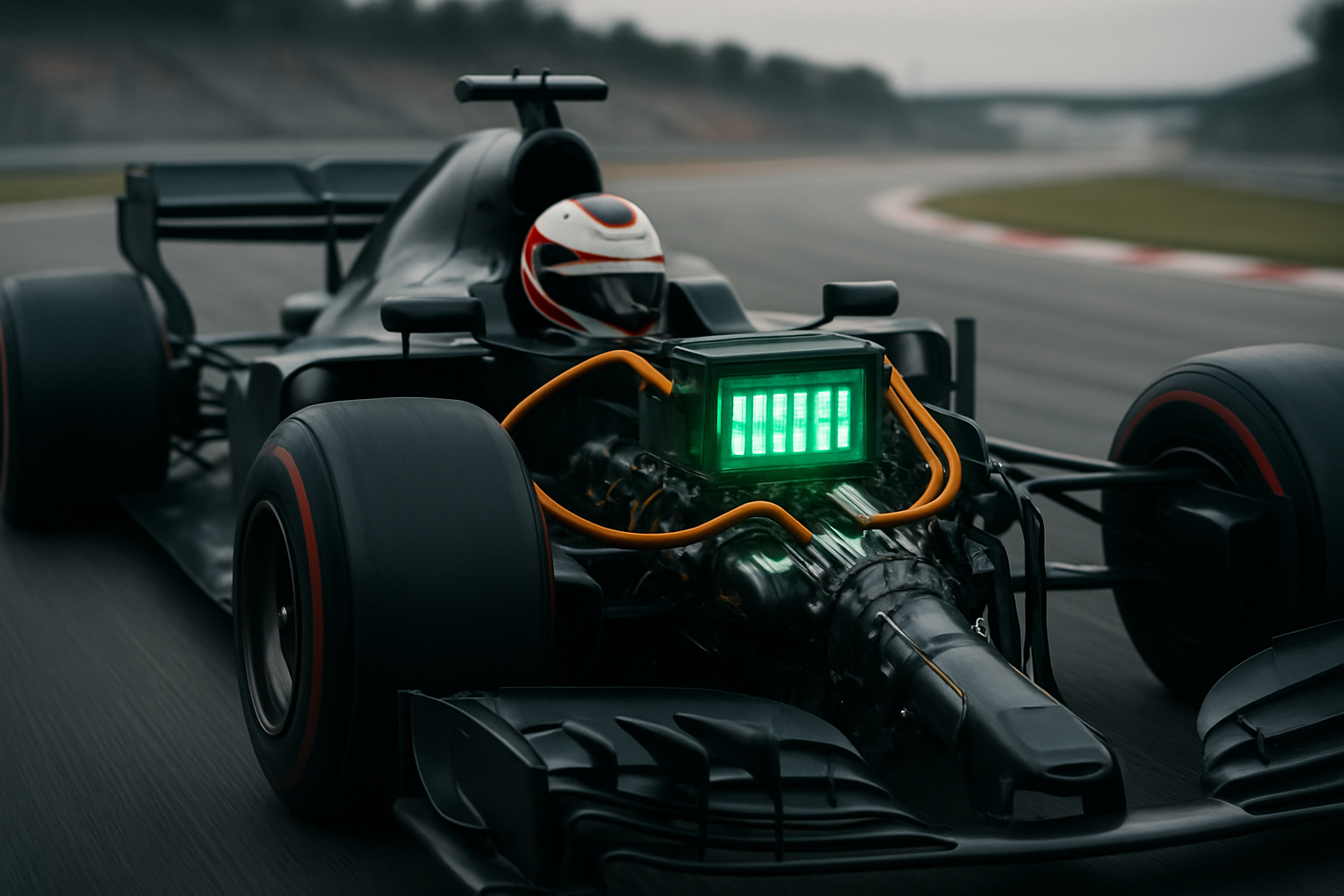Kinetic Energy Recovery Systems: Revolutionizing Motorsports and Beyond
In the high-octane world of motorsports, every fraction of a second counts. Engineers and teams are constantly seeking innovative ways to squeeze out extra performance from their machines. One technology that has been making waves in recent years is the Kinetic Energy Recovery System (KERS). This groundbreaking innovation is not only reshaping racing but also paving the way for more efficient road cars of the future.

The Birth of KERS: From Concept to Reality
The idea of harvesting energy from a moving vehicle isn’t new. As early as the 1960s, engineers were exploring ways to capture and reuse the kinetic energy lost during braking. However, it wasn’t until the late 2000s that KERS technology became a viable option for high-performance applications.
The Fédération Internationale de l’Automobile (FIA) introduced KERS to Formula 1 in 2009, marking a significant milestone in motorsport history. Initially, the system was optional, and teams struggled with reliability issues and added weight. But as the technology matured, its benefits became undeniable.
How KERS Works: The Science Behind the Speed
At its core, KERS is an energy recovery mechanism that captures the kinetic energy of a vehicle during deceleration. This energy, which would otherwise be lost as heat through the brakes, is instead converted into electrical or mechanical energy and stored for later use.
There are two primary types of KERS: electrical and mechanical. Electrical KERS uses a motor-generator unit connected to the drivetrain. During braking, this unit acts as a generator, converting kinetic energy into electrical energy stored in a battery or supercapacitor. When needed, the stored energy can be converted back into kinetic energy, providing a power boost.
Mechanical KERS, on the other hand, typically uses a flywheel to store rotational energy. As the vehicle decelerates, the flywheel spins up, storing energy. This energy can then be transferred back to the wheels when acceleration is required.
KERS in Action: Transforming Racing Dynamics
The introduction of KERS has dramatically altered racing strategies and driving techniques. In Formula 1, drivers can deploy the stored energy for a power boost of about 80 horsepower for up to 6.7 seconds per lap. This extra burst of speed can be crucial for overtaking, defending a position, or shaving precious tenths of a second off lap times.
KERS has also found its way into other motorsport categories, including endurance racing. In the 24 Hours of Le Mans, for instance, hybrid systems incorporating KERS technology have become increasingly prevalent, contributing to both performance and efficiency.
Beyond the Track: KERS in Road Cars
While KERS was initially developed for racing, its potential for improving efficiency in road cars hasn’t gone unnoticed. Many of the principles behind KERS are now being applied in hybrid and conventional vehicles to improve fuel economy and reduce emissions.
Regenerative braking systems in hybrid cars operate on similar principles to KERS, recovering energy during deceleration and storing it in batteries. Some high-performance road cars have even adopted more advanced KERS-like systems, blurring the line between racing technology and everyday transportation.
Challenges and Future Developments
Despite its benefits, KERS isn’t without challenges. The added weight and complexity of the system can be significant, especially in motorsports where every gram counts. Reliability was also a major concern in the early days of KERS implementation.
However, ongoing research and development are addressing these issues. Engineers are working on more compact, lighter, and more efficient energy storage solutions. Advancements in materials science and control systems are making KERS more reliable and effective.
Looking ahead, the future of KERS seems bright. As the automotive industry shifts towards electrification, the principles behind KERS are becoming increasingly relevant. We may see more advanced energy recovery systems that can capture energy not just from braking, but from other sources like exhaust heat or suspension movement.
The Broader Impact: Sustainability in Motorsports
KERS represents more than just a performance enhancement; it’s a step towards more sustainable motorsports. By recovering energy that would otherwise be wasted, KERS improves overall efficiency, potentially reducing fuel consumption and emissions.
This aligns with broader efforts in the motorsport world to become more environmentally conscious. Formula E, the all-electric racing series, has taken this concept to the extreme, showcasing the potential of electric powertrains in high-performance applications.
KERS as a Catalyst for Innovation
Kinetic Energy Recovery Systems have come a long way since their introduction to Formula 1 in 2009. From a novel and sometimes troublesome technology, KERS has evolved into a crucial component of modern motorsports, influencing everything from race strategy to car design.
More importantly, KERS serves as a prime example of how motorsport can drive innovation in the broader automotive industry. The lessons learned from implementing and refining KERS in the crucible of racing are now being applied to make road cars more efficient and environmentally friendly.
As we look to the future, it’s clear that energy recovery systems like KERS will play an increasingly important role in both motorsports and everyday transportation. By continuing to push the boundaries of what’s possible on the track, we’re paving the way for cleaner, more efficient vehicles on our roads. The race for technological superiority in motorsports is, in many ways, a race towards a more sustainable automotive future.





